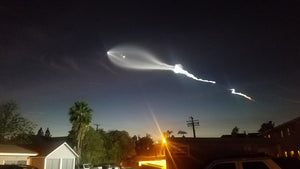Planet Watching and Messier objects in July
In Our Solar System
Venus is easy to spot in the west after sunset. At magnitude -4.0, it outshines everything except the Moon and is slowly catching up to Mars. The red planet is a much fainter magnitude 1.8, but you should be able to see them both within the same binocular field of view from the 2nd to the 23rd. They’re closest on the 12th and 13th with Regulus joining the pair for the last ten days of the month. Be sure to also look for the waxing crescent Moon nearby on the 11th and 12th. Both Jupiter and Saturn rise late in the evening, with a waning gibbous Moon between them on the 24th. Uranus and Neptune can be seen in the early hours with Mercury making an appearance in the predawn twilight for the first half of the month. The Moon turns new on the 9th and is full on the 23rd.
M8-The Lagoon Nebula
The Lagoon Nebula (M8) is sometimes visible to the naked eye, but if you live under suburban skies you can still enjoy this bright nebula with the help of some binoculars or a small scope.
The nebula’s apparent size is about three times the size of the full Moon, and is located just above and to the right of the Teapot asterism in Sagittarius. It can be found about 5 degrees west of Lambda Sagittarii, the star that marks the top of the Teapot. You’ll see a misty, horizontal band, with a dark lane splitting the nebula in two. The eastern hemisphere appears brighter than the west and includes NGC 6530, an open star cluster.
Telescopically, a small scope at low power will show some texture and roughly a dozen stars in the eastern hemisphere, while larger apertures will reveal additional dark lanes and texture with the use of an O-III filter.
Messier 92
The best time of year to observe M92 is during the summer, when Hercules is high overhead in the evening for northern observers.
Messier 92 (M92) is a globular cluster located in the northern constellation Hercules. The cluster lies at a distance of 26,700 light years from Earth and has an apparent magnitude of 6.3.
In 10×50 binoculars, M92 appears like a blurry star with a brighter core.
Small and medium-sized telescopes will resolve some of the stars in the outer regions of the cluster.
6-inch and 8-inch telescopes show an oval-shaped cluster with a bright center, surrounded by a halo of stars.
12-inch telescopes resolve dozens of individual stars in the halo and throughout the cluster.







